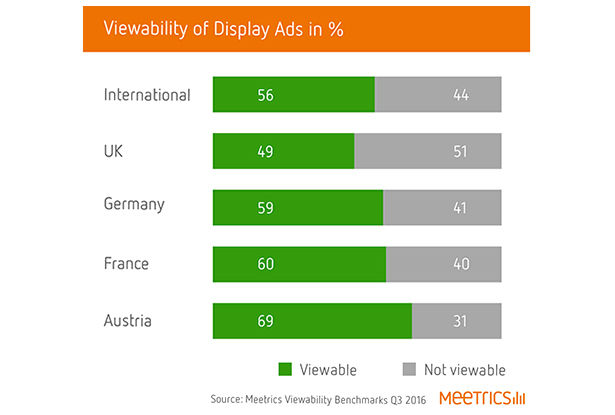Welcome to our weekly round-up of all the latest news and research from the world of search marketing and beyond.
This week, we’ve got a special on stories about advertising and mobile, with a look at mobile ad viewability from our regular mobile columnist Andy Favell, and the news that Snapchat video ads are generating less than three seconds’ viewing time on average. Over on our sister site ClickZ, Tereza Litsa took a look at how neuroscience can activate brains in a mobile world.
And speaking of advertising, take our 10-minute survey to tell us how the events of 2016 affected your advertising spend, and you could win an iPad mini in time for Christmas!
What is mobile ad viewability, and why does it matter?
When advertisers pay for ads, they understandably want to make sure that the advertising will be seen by someone. So if an ad fails to display, is visible for barely any time or is triggered by a bot instead of a real person, the advertiser shouldn’t be charged for that impression.
Mobile expert Andy Favell delved into why this is even more of a headache on mobile than on desktop, and why mobile viewability is an issue on so many levels.

Snapchat video ads generate less than 3 seconds of view time on average
Snapchat has been a hot property in the marketing world for some time now, with brands racing to snap up (haha) the young and highly engaged audience that Snapchat gives them access to. Only, it turns out that this audience might not be engaging with ads much at all.
Al Roberts reported for Search Engine Watch this week on the news that Snapchat’s video ads are generating an average of less than three seconds’ view time. Can video ads, even ones which take up the entire screen and play with sound by default, generate any useful leads in under three seconds? As Al Roberts wrote:
If they ultimately don’t see lift and can’t trace action back to these ads, Snapchat, which is reportedly preparing to go public in 2017 at a valuation of $25 to $35 billion, could find that advertiser interest in its platform is as fleeting as the snaps that its users send.
2017 will be the year of machine learning, intelligent content and experience
Last week, we looked at the eight most important content marketing trends that marketers will need to pay attention to in 2017. This week, Jim Yu wrote for our sister site ClickZ about why 2017 will be the year of machine learning, intelligent content and experiences.
Jim took a close look at the role of machine learning, deep learning and artificial intelligence in understanding data, the importance of automation, and how we can balance machine learning and human capital in the digital ecosystem.

Why Black Friday won’t be going anywhere for a while
Every year, a debate springs up in the world of ecommerce and retail as to whether Black Friday is really worth it. Is the hype bigger than the revenue it brings in?
Well, Black Friday supporters can rejoice, because Robyn Croll reported for ClickZ this week on why Black Friday won’t be going anywhere for a while. Figures from the National Retail Federation have shown that Black Friday 2016 set a record for mobile sales – a total of $1.2 billion, up by 33% from last year. 154 million consumers shopped over the long holiday weekend, an increase of 3 million from last year. Overall spending was up, and Cyber Monday set a record for the biggest day in US ecommerce sales with a massive $3.45 billion in transactions.
In her article for ClickZ, Robyn Croll looked into what retailers learned from last year’s Black Friday shopping extravaganza, and how retailers and brands can still tweak their strategies in the run-up to Christmas.
How neuroscience can activate brains in a mobile world
ClickZ and Search Engine Watch contributor Tereza Litsa was at Integrated Live this week, and listened to Heather Andrew of Neuro-Insight explain how neuroscience can help increase engagement with mobile users. She wrote,
“It’s not easy to be effective with the ever-increasing mobile audience, but emotion along with memory can contribute to a more meaningful relationship between a brand and a target user.
As people become more attached to their smartphones, marketing needs to be adjusted to build trust between a brand and a consumer – and neuroscience can be helpful in this journey.”
Tereza broke down Andrew’s speech into five key takeaways, including how to make messages personalised and relevant to users; the importance of delivering emotional intensity; and why driving physical interaction with branded messages is useful.

